
Health is a crown on the heads of the healthy that only the sick can see.

💔🕊️ Captive Kiss : Gaza Syndrome
Explore the shocking narrative surrounding the captive kiss for Hamas fighters, the complexities of the Gaza Syndrome, and the implications of prisoner exchanges. Delve into Israeli reactions, media portrayal, and the impact on Palestinian resistance amid ongoing conflict.
PALESTINE
Dr Hassan Al Warraqi
2/24/20259 min read

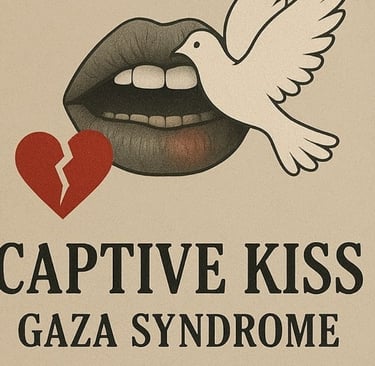
💔🕊️Captive Kiss : Gaza Syndrome
💔🕊️ Captive Kiss: Gaza Syndrome
(A symbol of pain, endurance, and the silent trauma of captivity — where the body survives but the soul remains wounded.)
💔🕊️ Captive Kiss: Gaza Syndrome explores the deep psychological and physiological scars left by prolonged siege, fear, and loss. The term “Gaza Syndrome” represents a complex trauma — a mix of survivor’s guilt, chronic stress, and emotional numbness — born from living under constant threat. In this piece, Dr. Hassan Al-Warraqi examines how the body’s immune and hormonal systems mirror the emotional captivity of the human spirit. Through fasting, prayer, and natural healing, he proposes a path to release — where endurance transforms into resilience, and suffering becomes a silent form of resistance. This is not just a medical condition; it is the anatomy of grief, faith, and survival.
The prisoner exchange between Hamas and Israel emerged as a central event laden with deep psychological, political, and social connotations.
Below is an extensive analysis of the exchange process, the implicit messages behind it, and how what is known as the "Gaza Syndrome" was triggered.
The General Context and Phases of the Exchange
A. Phases and Symbolic Framework
Gradual Exchange:
The exchange took place in successive phases; Hamas began by releasing Israeli prisoners—both civilians and military personnel—in exchange for the release of hundreds of Palestinian prisoners.This was conducted through Qatari-Egyptian mediation with indirect American support.
Symbolic Location:
The release of the Palestinian prisoners was carried out at the Rafah crossing, located near Israeli tanks. This choice was not random; it was a symbolic message from Hamas affirming that "the resistance imposes its conditions even at the borders of occupation," reflecting a challenge to Israeli authorities and an attempt to alter the dynamics of power on the ground.
B. Political and Media Messages
Expressions of Solidarity and Militarism:
Hamas employed solidarity banners for the Palestinian prisoners, while also showcasing its fighters in military uniforms and armed.This blending of the human and the military dimensions played a significant role in shifting the media narrative, conveying that the resistance is not merely a military confrontation but also a battle for values and human dignity.
Phased Negotiation as a Pressure Tool:
Each stage of the exchange was tied to specific political gains, such as halting airstrikes or opening aid crossings.This multifaceted negotiation approach transformed the exchange from a mere prisoner swap into a mechanism for achieving simultaneous political and humanitarian demands.
Dismantling the Zionist Narrative and the Story of the Israeli Captive’s Kiss
A. The Kiss as a Symbol of Narrative BreakdownThe Captive’s Kiss:
The scene in which an Israeli captive kissed a Hamas fighter caused a major shock in public opinion within Israel, as this act dismantled the long-held narrative portraying Palestinians solely as "monsters" or outright aggressors.
Psychological Transformation:
In this context, the concept of "Gaza Syndrome" emerges, referring to a cognitive and psychological shift among the captives.The captive found himself facing a dual existential threat: on one hand, the danger of Israeli airstrikes, and on the other, a loss of trust in his government’s ability to rescue him.
This drove him to seek security in the humane treatment provided by his captors, who, despite the harsh conditions of war, treated him with a civilized humanity.
B. The Psychological Reading – "Gaza Syndrome"Existential Threat and Human Experience:
"Gaza Syndrome" differs from the traditional Stockholm Syndrome; in the former, the captor was not an outright oppressor but a party engaged in a shared existential struggle.Both sides (the captive and the captive group) faced the same war and siege conditions, giving rise to deep feelings of gratitude and empathy rather than mere submission or fear.
Dismantling Traditional Narratives:
The scene raised existential questions within Israeli society, with some beginning to ask, "How can our children feel gratitude towards their enemies?" This undermined the long-promoted state narrative about the enemy’s image.
A Political Reading and Analysis of Internal Reactions
A. Reactions Within Israeli Society
Social Division:
Over 70% of the Israeli public supported the continuation of the exchange process—even if it involved releasing individuals convicted in "terrorist" activities—indicating that "psychological security" and the pursuit of humanitarian causes sometimes outweigh traditional security rhetoric for a large segment of the society.
Internal Political Pressure:
The Israeli government, headed by Netanyahu, faced attacks from far-right factions threatening to topple the government, while prisoner families demanded the release of videos and testimonies that highlighted the human aspects of the exchange.
B. The Political Crisis Facing Netanyahu
Contradictory Israeli Narrative:
Netanyahu attempted to portray the prisoner exchange as merely a propagandistic display against Hamas, but the humanitarian scene—evidenced by the kiss and expressions of gratitude from the captives—exposed contradictions in his narrative.He was accused of making concessions at the expense of national security in order to preserve his political standing.
The Role of the United States:
Washington played a critical role in pressuring for the deal's completion, aiming to prevent a dangerous regional escalation, which further complicated the political situation both within and outside Israel.
"Gaza Syndrome": A Psycho-Social Analysis
A. Comparison Between Stockholm Syndrome and "Gaza Syndrome"
B. Multifaceted Impact
On the Individual Level:
Captives’ feelings shifted from hostility to defending the rights of their captors, reflecting how shared human experiences can alter preconceived notions.
On the Collective Level:
"Gaza Syndrome" contributed to dismantling the stereotypical image of the "terrorist," revealing the complex interplay between victim and perpetrator within the context of war.
On the Geopolitical Level:
This phenomenon redefined the concept of "security," shifting the perspective from a purely military view to a human-centric approach based on coexistence and solidarity in the face of shared threats.
Phase Two: Complexities of the Issue and the Future of Gaza
A. Future Vision According to Hamas’ Announcement
Requirements for the Next Phase:A permanent ceasefire
A complete Israeli withdrawal from Gaza
A comprehensive exchange including the bodies of soldiers
Reconstruction of the Strip
Political Objectives:
Through these demands, Hamas aims to achieve a radical shift in power balances and to redraw the contours of the conflict, ensuring the fulfillment of Palestinian demands and establishing the foundations of a just peace.
B. Challenges and Future Scenarios
The Israeli Dilemma:
Israel faces a significant challenge in achieving a complete withdrawal without clear guarantees to end Hamas’ rule, placing it in a difficult political and security position.
The American and Arab Roles:
The United States leans toward a negotiation path that integrates the Palestinian Authority, while Arab actors propose an Egyptian-Jordanian intervention to manage Gaza through a technocratic government—although Hamas refuses to relinquish its arms or its system.
An Uncertain Future:
The future of Gaza remains caught between scenarios of reconstruction and a new phase of military escalation, imposing geopolitical and psychological challenges alike.
Conclusion: Gaza Between War and Humanity
A Battle Over the Narrative and Perception:
The prisoner exchange is not merely a logistical or military maneuver; it is also a battle over the narrative that redefines the relationship between oppressor and victim.
Psychological and Political Lessons:
"Gaza Syndrome" demonstrates that human experiences during war can dissolve preconceived judgments and spark a positive psychological transformation despite pain and suffering. It also suggests that true peace requires comprehensive justice and the elimination of the conflict’s root causes rather than a temporary truce.The Future Equilibrium:
Popular pressure and evolving psychological dynamics may eventually force the Israeli government to accept a deal that paves the way for a new phase of peace. However, Gaza’s future will continue to depend on balancing military security demands with a comprehensive humanistic vision.
This complex process proves that conflicts are not only arenas for military destruction but also battlegrounds for psychological, social, and political struggles that compel us to reconsider our identities and narratives.
It is a lesson in how human empathy can emerge from the depths of suffering and that building peace requires overcoming outdated stereotypes and embracing an inclusive vision based on justice and humanity.
Additional Quotes:
"The Israeli captive’s kiss before the masked fighter, who was nearby, served functionally for Hamas to convey many messages within this framework..."
"It is the popular Israeli pressure that will ultimately decide the outcome and will have a decisive voice with both the United States and the Israeli government..."
"...This kiss has dismantled an entire narrative; despite Israel’s attempts to portray Hamas as monsters and Palestinians as animals—as Gallant once stated—this kiss has not only undermined that narrative, but has completely overturned it."
Additional Observations:
The political situation in Israel is fragile, and the continuation of the governing coalition depends on several factors, including the passage of the budget.
The United States plays an important role in determining the course of events, and the American president could pressure Israel to move forward with the exchange deal.
The humanitarian situation in Gaza is deteriorating, and there is an urgent need for reconstruction.
In Summary:
The prisoner exchange between Hamas and Israel carries profound political and humanitarian implications. The scene of the Israeli captive kissing a Hamas fighter sparked a wide-ranging debate about conflicting narratives and the impact of the conflict on human relationships.
The future of this process—and of Gaza—remains uncertain, contingent upon internal, regional, and international political balances.
Questions and Answers About the Prisoner Exchange and Its Effects
Q: What are the main messages that Hamas intended to convey through the prisoner exchange process?
Hamas, through the exchange process, aims to deliver several messages, including:
Demonstrating the humane treatment of prisoners, contrary to what Israel claims.
Affirming Hamas’ ability to impose its conditions despite the blockade and Israeli military operations.
Highlighting the strength of the resistance as an alternative to Netanyahu or any other solutions.
Reminding Israel that the way to secure the return of the prisoners is through negotiation and adherence to the terms of the agreement.
Q: What is “Gaza Syndrome,” and how does it differ from “Stockholm Syndrome”?
“Gaza Syndrome” is a new concept that describes the psychological and cognitive transformation experienced by Israeli prisoners under Hamas.
It differs from “Stockholm Syndrome” in that the captive does not feel only fear and submission, but also gratitude and empathy towards his captors—because he sees that they protect him from Israeli airstrikes and that his own government is incapable of rescuing him.
Additionally, both sides (the captor and the captive) are exposed to the same conditions of war and siege, which enhances their solidarity and empathy.
Q: How did Israeli society react to the scene of the Israeli captive kissing a Hamas fighter?
This scene caused a major shock in Israel, as it shattered the stereotypical image that Israel has long tried to promote of Palestinians as “monsters.”
It raised existential questions about how the prisoners could feel gratitude “toward their enemies,” thereby undermining the official Israeli narrative.
Despite the shock, a poll indicated that more than 70% of Israelis support continuing the prisoner exchange deal.
Q: What are Hamas’ main demands for the second phase of the ceasefire agreement?
The demands include:
A permanent ceasefire.
A complete Israeli withdrawal from Gaza.
A comprehensive exchange of prisoners, including the bodies of soldiers.
The reconstruction of the Gaza Strip.
Q: What challenges face the completion of the prisoner exchange deal and moving forward to the second phase?
Challenges include:
Opposition from the far-right in Israel, which threatens to topple the government.
Israeli hesitancy in providing guarantees to end Hamas’ rule.
Disagreements about Gaza’s future, with different visions among the United States, Arab actors, and Hamas.
Internal political tensions in Israel and the potential collapse of the governing coalition.
Q: What is the stance of the families of the Israeli prisoners regarding the continuation of the war, and how does it differ from the government’s position?
The families of the prisoners have rebelled against the Israeli security and media authorities, demanding the broadcast of videos that highlight the humanitarian aspects of the exchange process. They wish to express their feelings and call for an end to the war and a final agreement. This reflects growing popular pressure on the Israeli government.
Q: What role does the United States play in the prisoner exchange deal and the future of Gaza?
The United States exerts pressure to finalize the deal and avoid a dangerous regional escalation. It tends to favor a negotiation approach that integrates the Palestinian Authority into Gaza’s future. Additionally, the American president could play a decisive role in convincing Israel to move forward with the deal.
Q: What is the future of the situation in Gaza in light of these developments?
The future of Gaza remains unclear and depends on internal, regional, and international political balances. There are various scenarios, including reconstruction, continued military escalation, or reaching a permanent peace agreement. Achieving lasting peace will require comprehensive justice and addressing the root causes of the conflict.
Keywords
Prisoner exchange, Hamas, Israel, Gaza Syndrome, Israeli reactions, Shocking kiss, Israeli narrative, Palestinian resistance, Psychological warfare, Media scene, Netanyahu, Public pressure, Israeli right-wing, Palestinian prisoners, Rafah crossing, Israeli bombardment, Humanitarian situation in Gaza, Reconstruction, Negotiations, Ceasefire, Military withdrawal, Future scenarios, Psychological analysis, Human relationships, Justice, Injustice, International legitimacy, Media war, Government coalition, United States, Global public opinion, Stereotypes, Empathy, Gratitude, Existential threat, Armed resistance, Academic studies, Cognitive shifts, Shared suffering, Palestinian-Israeli conflict.
===================================================================================================================================================
Written by Dr. Hassan Al-Warraqi, founder of H-K-E-M.com, integrating prophetic medicine, fasting science, and natural immunity to explore healing beyond the physical body.
💔🕊️ Captive Kiss : Gaza Syndrome
====================================================================================================================================================================================================
🦶 Achilles Tendon Injury: A Wide-Ranging Overview 🩺
#AchillesTendonInjury #AchillesTear #TendonHealing #SportsInjury #OrthopedicCare #PhysicalTherapy #Rehabilitation #InjuryPrevention #MuscleRecovery #FootAndAnkleHealth #HKEM #NaturalHealing #FastingAndRecovery #HoneyTherapy #MedicalEducation
===================================================================================================================================================
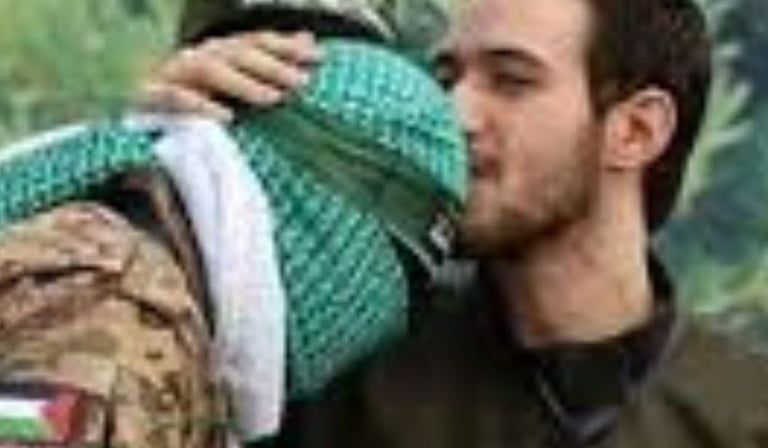

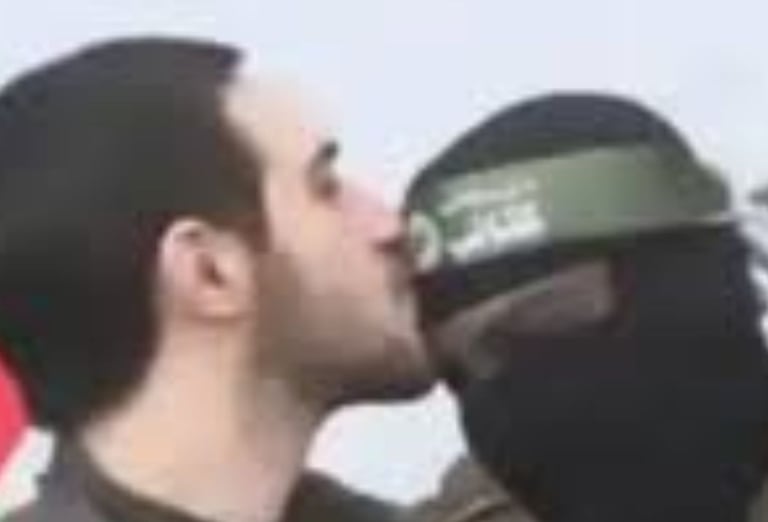


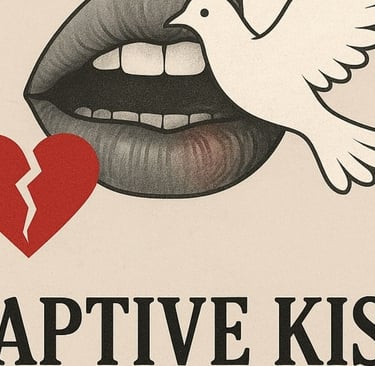




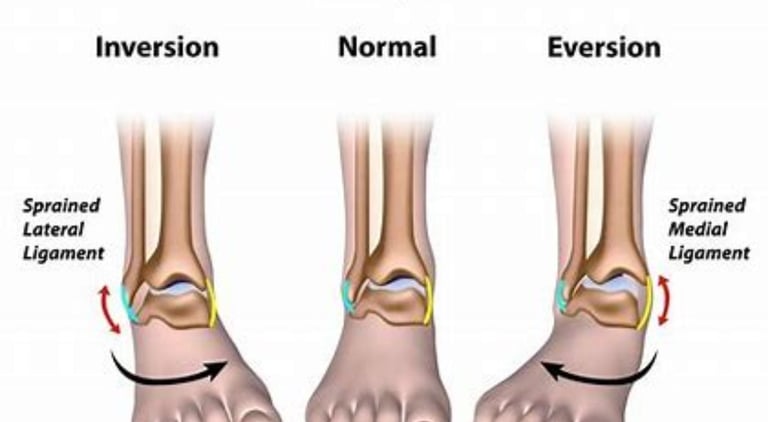


Get in touch
Address
Cairo Al Rehab
Contacts
+20 109 405 2056
hassanalwarraqi@h-k-e-m.com
